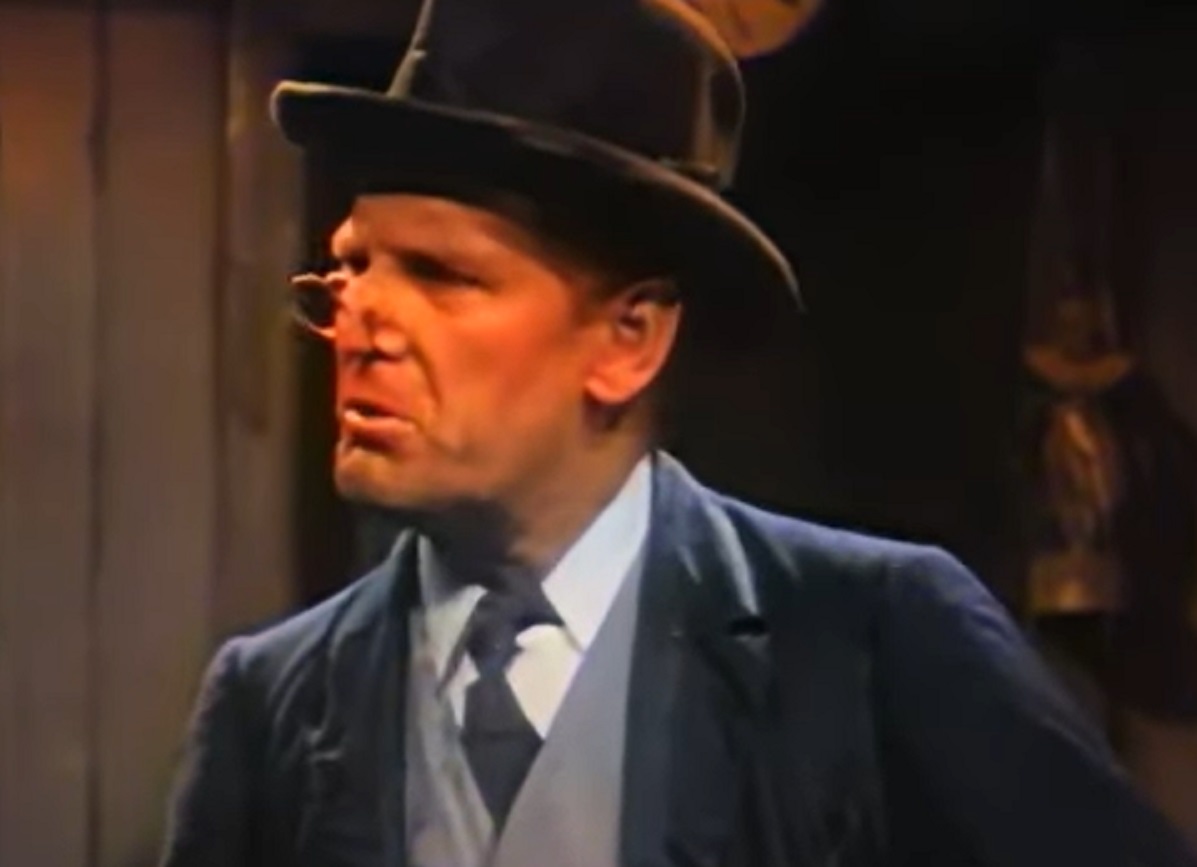Will Hay was an English comedian famous for his blundering schoolmaster character. But, off-screen, he hid many out-of-this-world talents (and a seriously strange personality).
1. He Was A Mystery
Will Hay was one of Britain’s most influential comedians. His blustery characters mocked familiar aspects of British culture, leaving his audiences in absolute stitches. But, when the curtains closed and the cameras stopped rolling, the laughter stopped.
Hay hid his deeply unfunny personality traits and strange obsessions from his adoring audiences. But we’ve revealed them.

2. He Had Quaint Beginnings
Will Hay’s journey to comedy stardom had the most unassuming of beginnings. He was born in December of 1888 in the quaint market town of Stockton-on-Tees as one of five children. His father’s work saw the family move around a lot, eventually settling in London. He was supposed to follow in his father’s footsteps but he chose a more daunting path for himself.
 20th Century Studios, Where's That Fire? (1940)
20th Century Studios, Where's That Fire? (1940)
3. He Was Full Of Mischief
Hay would later describe his younger self as something of a “rogue” who enjoyed “indulging in acts of mischief”. But, in an effort to strike out on his own, he ended up working as an apprentice engineer. He wasn’t your average gear head though. By his late teens, Hay was fluent in Italian, French and German and began working as an interpreter.
But his mother tongue was romance.
 Gainsborough Pictures, Ask a Policeman (1939)
Gainsborough Pictures, Ask a Policeman (1939)
4. He Had Puppy Love
The heart wants what the heart wants—and in Hay’s case, that was a storybook romance. Hay met his childhood sweetheart, Gladys Perkins, when they were both just children, between 12 and 15 years old. Despite their youth, their love was stronger than any bond either of them would ever have. Their destinies were intertwined; for better or, possibly, worse.
 Gainsborough Pictures, Ask a Policeman (1939)
Gainsborough Pictures, Ask a Policeman (1939)
5. He Married His Childhood Sweetheart
According to Hay’s childhood sweetheart Gladys, Hay had been “determined” from the moment he met her that she would be his wife. And in 1907, he turned that dream into a reality, settling happily into married life while working as an interpreter. However, a chance encounter upended his quiet life and set him on path to stardom.
 Gainsborough Pictures, Oh, Mr Porter! (1937)
Gainsborough Pictures, Oh, Mr Porter! (1937)
6. He Made A Shocking Life Change
Shortly after marrying Gladys, Hay made a decision that stunned his family and friends. After seeing the legendary performer WC Fields in the theater one night, Hay decided that he would throw a wrench into the perfectly functioning machinery of his quiet life. Without any doubt in his mind, he decided that he wanted to be a comedian.
His first joke was far from funny.
7. He Was A Disappointment
With a head full of dreams and a heart full of hopes, Hay broke the news of his decision to become a comedian to his family. But his parents and in-laws didn’t exactly get the joke. His loved ones didn’t hesitate in expressing their extreme disappointment with his foolhardy decision. They should have expressed their concern more gravely.
 Gainsborough Pictures, Oh, Mr Porter! (1937)
Gainsborough Pictures, Oh, Mr Porter! (1937)
8. He Was A Sad Clown
Hay might have been an engineering and linguistic prodigy but he didn’t know anyone in show business and he struggled to get his foot in the door. His first shows didn’t even pay enough to cover the cost of a bus ticket and he had to walk from town to town. But, little did he know, good fortune was just around the corner.
 Gainsborough Pictures, Oh, Mr Porter! (1937)
Gainsborough Pictures, Oh, Mr Porter! (1937)
9. He Caught The Eye Of A Showbiz Giant
Hay's persistence in the comedy circuit was about to pay off—in a big way. Fred Karno, the influential impresario, noticed Hay’s talent and knew that he needed a bigger stage—and Karno was just the guy to give it to him. He had launched the careers of legends like Stan Laurel and Charlie Chaplin. The only question remained, how bright would Hay’s star shine?
 Essanay Studios, Wikimedia Commons
Essanay Studios, Wikimedia Commons
10. He Found Inspiration Close To Home
In 1910, with Karno’s help, Hay debuted a sketch comedy character that would define the rest of his career. Capitalizing on an experience that every Brit could relate to, Hay developed the character of a bumbling, blustering, buffoonish schoolmaster. The outlandish parody immediately struck a chord with audiences and Hay’s comedic career took off.
Too bad he couldn’t take any of the credit.
 Gainsborough Pictures, Oh, Mr Porter! (1937)
Gainsborough Pictures, Oh, Mr Porter! (1937)
11. He Used His Sister's Stories
Hay’s schoolmaster character had been a stroke of genius. Just not his genius. Surprisingly, the inspiration for this beloved persona came from his sister's tales from her teaching job. At family gatherings, she would regale everyone with hilarious stories from the classroom that he would then turn into sketch comedy gold.
He had a strange way of paying tribute to his sister.
 Gainsborough Pictures, Oh, Mr Porter! (1937)
Gainsborough Pictures, Oh, Mr Porter! (1937)
12. He Was Definitely Not A Drag
Long before Ru Paul, there was Will Hay. Initially, Hay portrayed the schoolmaster character as a schoolmistress, appearing in drag (possibly to honor his sister). However, he made the bold decision to swap genders and transform the character into a headmaster. The sight of a blundering buffoon resonated with audiences and left them in stitches.
He was just getting warmed up.
 20th Century Studios, Where's That Fire? (1940)
20th Century Studios, Where's That Fire? (1940)
13. He Went Worldwide
Performing under the banner of “The Fourth Form at St Michael's," Hay toured internationally with his schoolmaster act. He went to various countries, including the United States, Canada, Australia, and even South Africa where he flexed his polyglot muscles. He learned Afrikaans and incorporated it into his act.
Surprisingly, he wasn’t even the most talented person in his family.
 Gainsborough Pictures, Oh, Mr Porter! (1937)
Gainsborough Pictures, Oh, Mr Porter! (1937)
14. His Wife Was Even Funnier Than He Was
A true testament to marital harmony, Hay's wife Gladys played popular roles in his sketches. She seamlessly slipped into characters like a schoolboy or the crowd favorite, Harbottle—a dim-witted, nearly deaf old man. Sadly, Hay would have to undertake the next exciting chapter of his career without his wife by his side.
 Gainsborough Pictures, Ask a Policeman (1939)
Gainsborough Pictures, Ask a Policeman (1939)
15. He Found His True Calling
During his US tour, Hay developed an unexpected interest in filmmaking—but he didn’t think he had the chops to become a major film star. Upon his return to Britain, however, he ventured into the world of cinema at Elstree Studios. His foray into filmmaking produced minor hits like Those Were the Days and Radio Parade of 1935.
He was, however, about to make a major breakthrough.
 20th Century Studios, Where's That Fire? (1940)
20th Century Studios, Where's That Fire? (1940)
16. He Made His Silver Screen Debut
In 1935, Hay made the move to Gainsborough Pictures—and then made movie magic. He wrote and starred in the instant classic, Boys Will Be Boys, catapulting him from theater B-lister to silver screen A-lister. However, just as his professional career was taking off, his personal life was falling apart and he only had himself to blame.
 20th Century Studios, Where's That Fire? (1940)
20th Century Studios, Where's That Fire? (1940)
17. He Caused Trouble In Paradise
As Hay soared to stardom, his personal life was headed straight for rock bottom. His once happy marriage to his childhood sweetheart, Gladys Perkins, took an unexpected turn in the wrong direction. After welcoming their three children into the world, the couple separated, never to reconcile again. But their story was far from over.
 Gainsborough Pictures, Ask a Policeman (1939)
Gainsborough Pictures, Ask a Policeman (1939)
18. His Wife Couldn’t Let Him Go
Despite their acrimonious separation, Hay and Perkins remained married for the rest of their lives. But it hadn’t been Hay’s decision. Perkins refused to officially dissolve their union with a divorce because of her profound Catholic faith. Despite her determination to maintain their mirage of marriage, there was no forgiving what Hay had done.
 Gainsborough Pictures, Ask a Policeman (1939)
Gainsborough Pictures, Ask a Policeman (1939)
19. He Crossed A Line He Couldn’t Come Back From
For years, Hay and Perkins remained tight-lipped about the details of their failed marriage. However, those closest to the couple knew the true tragic reality; Hay had crossed the line. As a comedian, he made his adoring laugh until their ribs hurt. But, as a husband, he made his loved ones cry until their hearts broke.
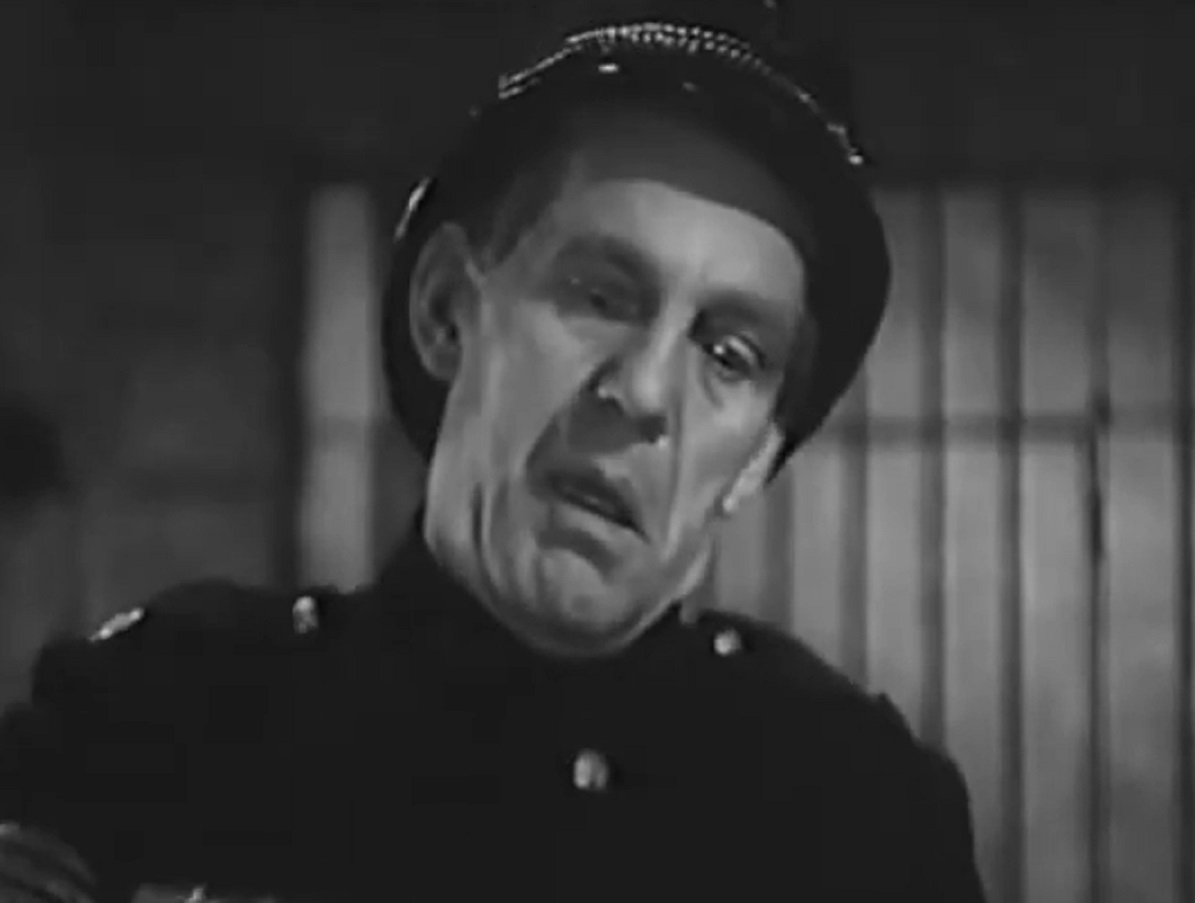 Gainsborough Pictures, Ask a Policeman (1939)
Gainsborough Pictures, Ask a Policeman (1939)
20. His Heart Belonged To Someone Else
Hay had once had a storybook romance, marrying his childhood sweetheart. But, it seems like stardom shone brighter than the flame of his love. After years of marriage, Hay had fallen in love with someone else; the wintry Norwegian beauty, Randi Kopstadt. He even made a cryptic tribute to their love affair in one of his films.
 Gainsborough Pictures, Ask a Policeman (1939)
Gainsborough Pictures, Ask a Policeman (1939)
21. He Hid His Affair In Plain Sight
In 1936’s Windbag the Sailor, Hay made passing reference to his secret love affair. His character, Captain Ben Cutlet, has an unexplained yearning for Norway, mirroring his real-life escapades with Kopstadt. Even as their controversial love story unfolded both on and off screen, Hay’s fame and popularity only grew. In fact, fans couldn’t get enough.
 Gainsborough Pictures, Ask a Policeman (1939)
Gainsborough Pictures, Ask a Policeman (1939)
22. He Conquered The Airwaves
At the height of his popularity, Hay made a seamless transition to radio. His schoolmaster character found a new home on the BBC with the Will Hay Programme. However, his radio reign came to an unexpected and controversial end that pitted the famed comedian against his BBC producers. What Hay’s fans did next proved the depth of their devotion to him.
 Gainsborough Pictures, Oh, Mr Porter! (1937)
Gainsborough Pictures, Oh, Mr Porter! (1937)
23. His Radio Reign Ended Abruptly
The Will Hay Programme, a gem of BBC radio, mysteriously lasted just four months before it vanished from the airwaves. At first, both Hay and the BBC tried to play down the controversy. They gave the official excuse that the scripts had been subpar but few of Hay’s ardent fans believed that story. There was a far more scandalous truth at play.
 Gainsborough Pictures, Oh, Mr Porter! (1937)
Gainsborough Pictures, Oh, Mr Porter! (1937)
24. His Radio Show Caused A Controversy
The truth behind the premature demise of Hay's show was shockingly political. In a move that enraged him, the BBC had “faded out” his program to make space for the prime minister's broadcast. Hay took umbrage at the slight and decided not to return to the broadcaster. But the demand for his comedic chops was just too great.
 Gainsborough Pictures, Oh, Mr Porter! (1937)
Gainsborough Pictures, Oh, Mr Porter! (1937)
25. His Fans Wouldn’t Let Him Go
Hay’s outraged fans along with media pressure from other organizations forced the BBC into issuing an apology to Hay and reinstating his show. With public support back in his corner, he continued his radio success until 1944. Hay ended his radio show shortly thereafter with a private live performance for the royal family.
He barely lived to tell the tale.
 Gainsborough Pictures, Oh, Mr Porter! (1937)
Gainsborough Pictures, Oh, Mr Porter! (1937)
26. He (Thankfully) Missed His Train
Hay wasn't just a comedic genius who performed in royal palaces—he was also a daredevil on set. While filming Oh, Mr. Porter! in 1937, Hay narrowly escaped a gruesome demise in a harrowing encounter with a speeding train. No one knows much about the incident except that it didn’t deter Hay from future daredevil stunts.
He also went into another adventure entirely.
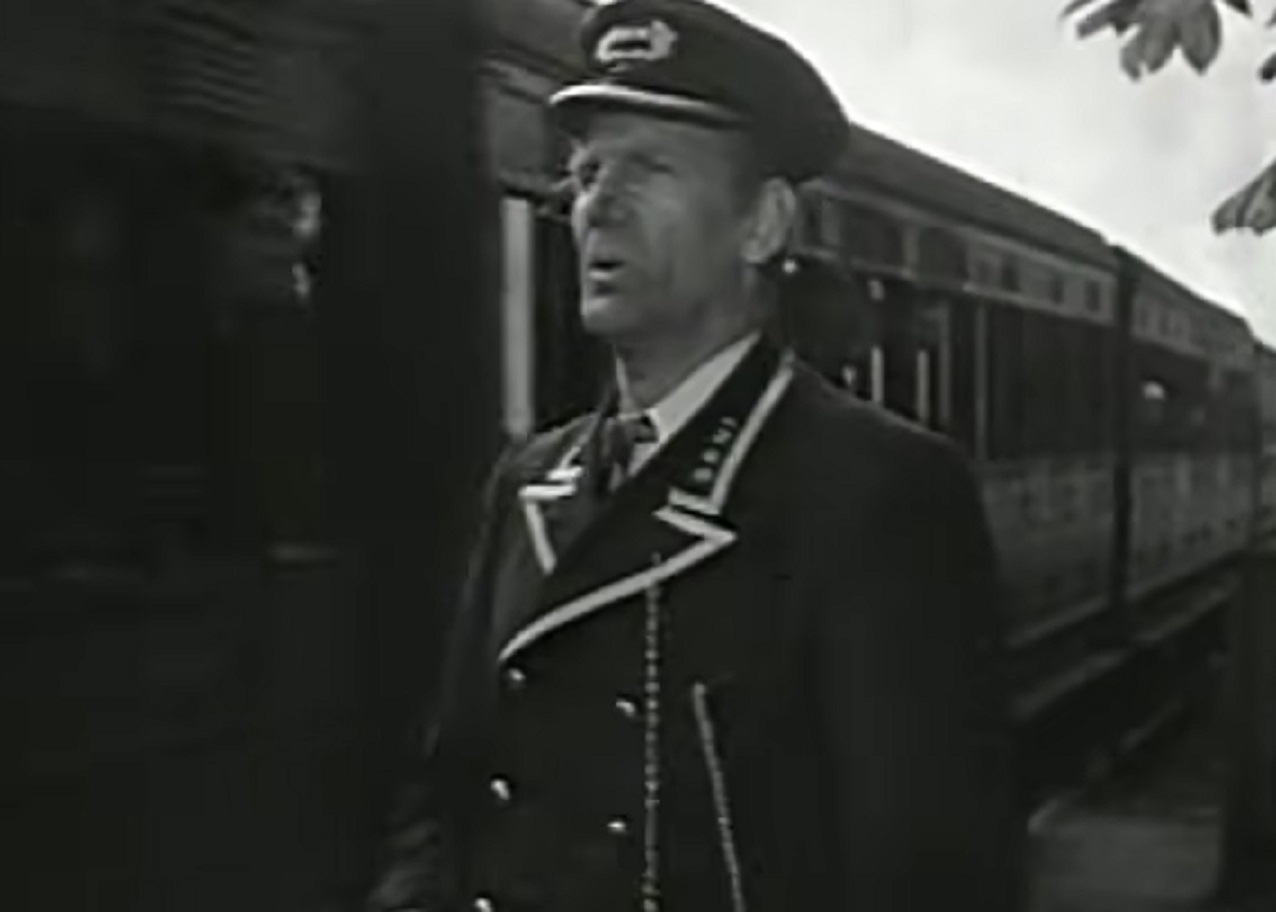 Gainsborough Pictures, Oh, Mr Porter! (1937)
Gainsborough Pictures, Oh, Mr Porter! (1937)
27. He Had Wingmen
Between 1936 and 1940, Hay had his own version of the Three Stooges. He appeared in several films alongside fellow comedians Moore Marriott and Graham Moffatt. The three funny men came up with a routine that saw Marriott and Moffatt play straight men (ie, comic foils) alongside Hay’s farcical schoolmaster amongst other characters.
It was a tough act to beat—and repeat.
 Gainsborough Pictures, Ask a Policeman (1939)
Gainsborough Pictures, Ask a Policeman (1939)
28. He Was A Box Office Smasher
With Marriott and Moffatt providing a contrast to Hay’s schitcky schoolmaster, Hay turned into a box office smasher. He quickly became one of the highest grossing film stars in UK history, churning out blockbuster after blockbuster with his two wingmen. However, it wasn’t long before cracks began to show in the profitable partnership.
 20th Century Studios, Where's That Fire? (1940)
20th Century Studios, Where's That Fire? (1940)
29. He Kept The Element Of Surprise
Hay was nothing if not a comedy genius. And he knew that one key ingredient in keeping the laughs rolling was to always maintain the element of surprise. After a string of box office successes, however, Hay grew increasingly weary of the same old routine with Marriott and Moffatt and feared that audiences would too. But no one believed what he would do next.
 Gainsborough Pictures, Oh, Mr Porter! (1937)
Gainsborough Pictures, Oh, Mr Porter! (1937)
30. His Comedy Trifecta Came To An End
After filming Where's That Fire?, Hay left his fans gobsmacked when he made an unexpected decision: He was breaking up the band. In a move that left comedy audiences stunned, Hay parted ways with Marriott and Moffatt, with Hay expressing his desire for more variety. He may, however, have had ulterior motives for ending the partnership.
 20th Century Studios, Where's That Fire? (1940)
20th Century Studios, Where's That Fire? (1940)
31. He Had Trouble In Comedy Paradise
Between the rib-cracking laughter and uproarious applause that punctuated Hay's films with Moffatt and Marriott, existed a little-known tension. Hay found his collaboration with the comic duo to be something less than pleasant, colorfully comparing their collective dynamic to "a three-legged stool". Beneath the surface of their comedic brilliance, bitterness had been brewing.
 Gainsborough Pictures, Oh, Mr Porter! (1937)
Gainsborough Pictures, Oh, Mr Porter! (1937)
32. He Was Horribly Jealous
Jealousy was seldom a trait audiences would have associated with a comedy titan like Hay. But it turns out that he was a big, green jealousy monster. Allegedly, the real reason that Hay wanted to break away from Moffatt and Marriott was that he feared audiences were growing to love them more. As it turns out, when the cameras weren’t rolling, Hay wasn’t all that likable.
 Gainsborough Pictures, Ask a Policeman (1939)
Gainsborough Pictures, Ask a Policeman (1939)
33. He Was A Lone Star
Away from the bright lights of the stage or set, Hay cast a contrasting shadow—a man whom his colleagues called "an eccentric, and a very serious and private man, and some thought he may have had a dark side due to his demeanour".
While the cameras were rolling, he reduced audiences to tears of joy. Offstage, however, he was often reserved and shunned frivolity. His multiple personalities made for weird on-set encounters.
 Gainsborough Pictures, Ask a Policeman (1939)
Gainsborough Pictures, Ask a Policeman (1939)
34. He Was Not Funny—At All
As funny as he was, Hay wasn’t actually all that fun to be around. Barry Morse, who worked alongside Hay in The Goose Steps Out, painted a vivid picture of Hay's off-camera persona. Morse recalled that Hay would often sit quietly by himself, wrapped up in a blanket between takes. The tales of Hay's peculiar off-screen habits didn't stop at Morse's account.
35. His Off-Screen Routine Baffled Everyone
Peter Ustinov, the celebrated actor and filmmaker, provided further proof of Hay's unique (and somewhat troubling) way of unwinding between shoots. According to Ustinov, the entire set would have to observe silence during Hay's tea-time as he sat wrapped up in his blanket. He might have needed the silence to recover.
 Gainsborough Pictures, Oh, Mr Porter! (1937)
Gainsborough Pictures, Oh, Mr Porter! (1937)
36. He Was A Hyper Hypochondriac
Comedic genius aside, Hay had one trait that was far from amusing—he was an unabashed hypochondriac! Many of his colleagues got used to Hay constantly voicing concern about his health while they worked together. In fact, one of Hay’s co-stars, Val Guest, even recounted the funny ways in which in they would all deal with his constant complaining.
 Unknown Author, Wikimedia Commons
Unknown Author, Wikimedia Commons
37. He Made His Co-Stars Rich
Hay’s hypochondria proved to be a source of entertainment (and income) for his co-stars. Guest recalled that, on the set of Oh, Mr. Porter!, the cast and crew would write down what ailment they thought Hay would complain about that day and place bets in a hat. Whoever guessed correctly got to keep the kitty.
Despite his perceived health troubles (real or not), Hay’s best days and biggest box office draws still lay ahead.
 Gainsborough Pictures, Oh, Mr Porter! (1937)
Gainsborough Pictures, Oh, Mr Porter! (1937)
38. He Reached The Tippy Top—And Fell Off
Hay’s decision to break up his comedy routine with Moffatt and Marriott turned out to be the best decision he would ever make professionally. Partnering with Ealing Studios, Hay catapulted to the top of the box office, making him the third biggest film star in Britain. Success sure tasted sweet, but as it turned out, a bitter pill lay in his path.
 Gainsborough Pictures, Oh, Mr Porter! (1937)
Gainsborough Pictures, Oh, Mr Porter! (1937)
39. His Health Took A Tragic Turn
As it turns out, Hay’s intense hypochondria was not without merit. An unexpected and devastating diagnosis dimmed his star while it was shining brightest. Doctors told the comedian that he had the dreaded “C” word: cancer. It was devastating news, no doubt, but Hay was determined to laugh his way through the pain for as long as he could.
 Gainsborough Pictures, Oh, Mr Porter! (1937)
Gainsborough Pictures, Oh, Mr Porter! (1937)
40. He Made One Last Appearance
Despite his terrifying diagnosis, Hay continued making films. But laughter, it would seem, was not the right medicine for him. His health declined rapidly to the point that he was in too much pain to produce the laughs. In 1943, he made his final film appearance in My Learned Friend. Fortunately, he had other hobbies to fall back on.
 Gainsborough Pictures, Oh, Mr Porter! (1937)
Gainsborough Pictures, Oh, Mr Porter! (1937)
41. He Had His Eyes On The Stars
As it turns out, Hay’s entire life had a tinge of funny coincidence to it. As a young boy, he had witnessed a shooting star during a long journey home, sparking a lifelong fascination with astronomy. It was funny that the boy who marveled at celestial bodies would go on to become a star himself. He may even have been a better astronomer than actor.
 Gainsborough Pictures, Convict 99 (1938)
Gainsborough Pictures, Convict 99 (1938)
42. His Star Shone Brightest In The Actual Sky
Hay’s contributions to comedy can’t be overstated—and neither can his contributions to astronomy. On August 3rd, 1933, his persistent gaze into the cosmos yielded a fascinating find: a Great White Spot on Saturn. News of Hay’s discovery spread rapidly across the astronomical society, sparking a wave of interest in the oddly academic comedian.
Surprisingly, he still had other, groundbreaking hidden talents.
 Gainsborough Pictures, Convict 99 (1938)
Gainsborough Pictures, Convict 99 (1938)
43. His Stayed Grounded Even In The Skies
Away from flickering spotlights and telescopic stargazing, Hay nurtured another hidden passion—flying! And clearly, his comedic career and astronomical discoveries brought in the dough. Not simply content to be one among many air travel enthusiasts, Hay was one of the first private aircraft owners in the United Kingdom.
From so high up, he had a different perspective on life.
 Gainsborough Pictures, Convict 99 (1938)
Gainsborough Pictures, Convict 99 (1938)
44. He Saw The Big Picture Behind The Big Pictures
Hay's fascination with astronomy did more than just teach him about celestial bodies; it gave him deep insights into life and human nature. During a 1933 interview with the Daily Mail, he voiced his belief that astronomers “see life in its true proportion”. He was convinced that if everyone were an astronomer, conflict would cease to exist.
Or, he could just make people laugh.
 Gainsborough Pictures, Convict 99 (1938)
Gainsborough Pictures, Convict 99 (1938)
45. He Wanted To Make A Big Comeback
In the later years of his illustrious career, with his health slowly on the mend, Hay wanted to do the unthinkable. He hoped, against all the odds, to make a triumphant return to cinema. His plan was to team up with the notable French director, Marcel Varnel. But the stars that Hay liked to study so much had already written his fate: a tragedy. Gainsborough Pictures, Convict 99 (1938)
Gainsborough Pictures, Convict 99 (1938)
46. His Comeback Came Crashing Down
Just as Hay was preparing to return to the silver screen, tragedy struck. In an unexpected twist, Varnel, the director of Hay’s comeback film, met an untimely demise in a car accident. The freak occurrence shattered Hay's plans for a coveted comeback and deterred him from ever returning to the screen. Plus, he had bigger problems.
 Gainsborough Pictures, Convict 99 (1938)
Gainsborough Pictures, Convict 99 (1938)
47. His Health Continued To Decline
By 1946, whatever hope Hay had of ever returning to the big screen had withered thanks to a “stroke” of bad luck. During a holiday intended for relaxation and rejuvenation, Hay suffered a severe stroke that left the right side of his body paralyzed. The most devastating symptom of the stroke was that it took away Hay’s ability to ever crack a joke again.
 Gainsborough Pictures, Convict 99 (1938)
Gainsborough Pictures, Convict 99 (1938)
48. He Could Barely Speak
With the right side of his body almost completely immobilized, Hay was unable to recreate his blustery schoolmaster character. Even worse, the stroke had greatly reduced his ability to speak, meaning that he couldn’t even tell a joke, further dampening the spirits of the once exuberant star. But he wasn’t done shining quite yet.
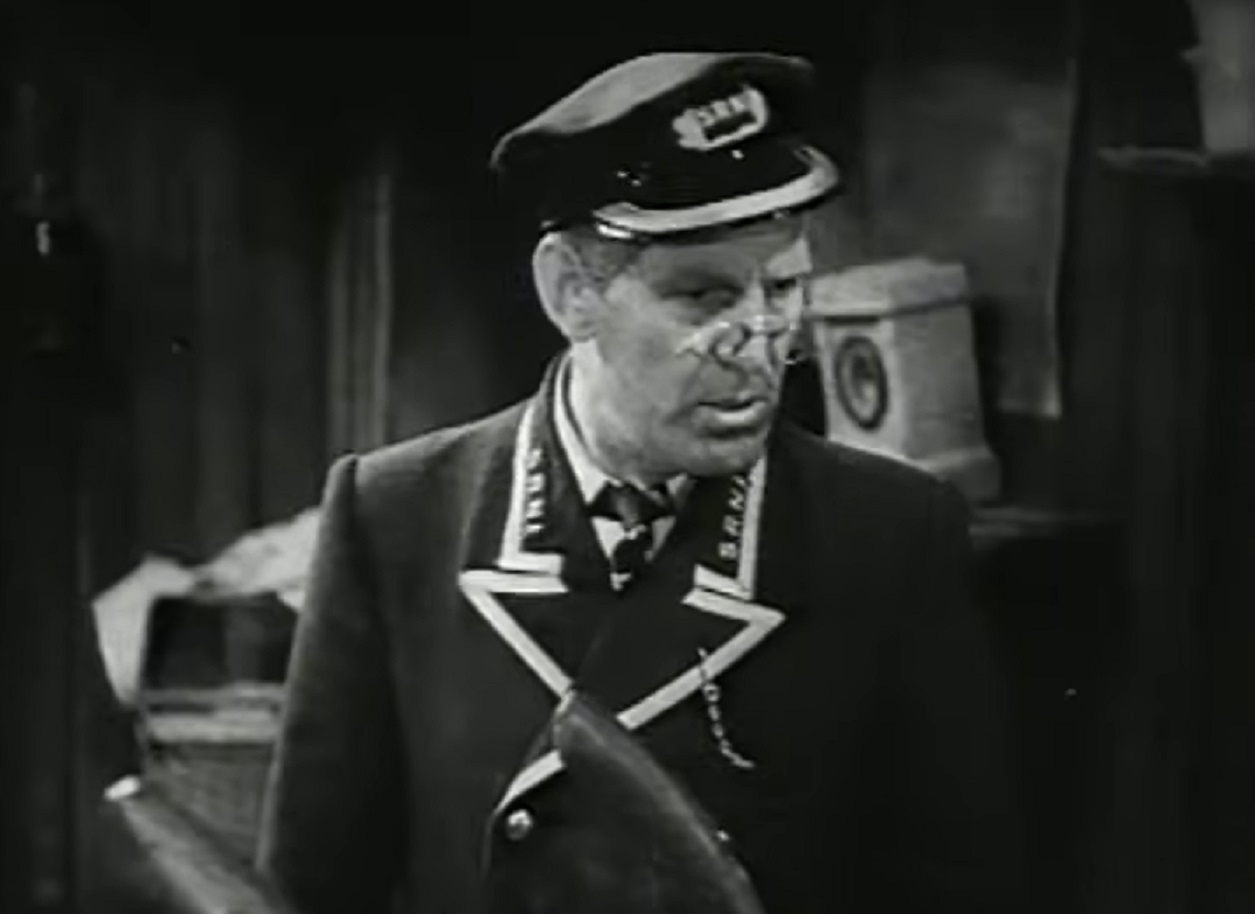 Gainsborough Pictures, Oh, Mr Porter! (1937)
Gainsborough Pictures, Oh, Mr Porter! (1937)
49. He Was Half The Man He Used To Be
Despite being under professional medical care, it eventually dawned on Hay that the road to recovery would be daunting. His physicians broke the disheartening news—he could only hope for a partial recovery at best. It was a heart-wrenching prognosis for a man who had consistently brought joy to countless hearts.
He would still try everything he could to return to his beloved audiences.
 20th Century Studios, Where's That Fire? (1940)
20th Century Studios, Where's That Fire? (1940)
50. He Sought Out Better Climes
On the advice of his doctors, Hay relocated to South Africa, hoping that the region's climate would aid in his recovery journey. An unfortunate twist of fate found him trading stage lights for sunlight as he bravely soldiered on in his quest of better health. Against the odds, he recovered enough for one last swan song.
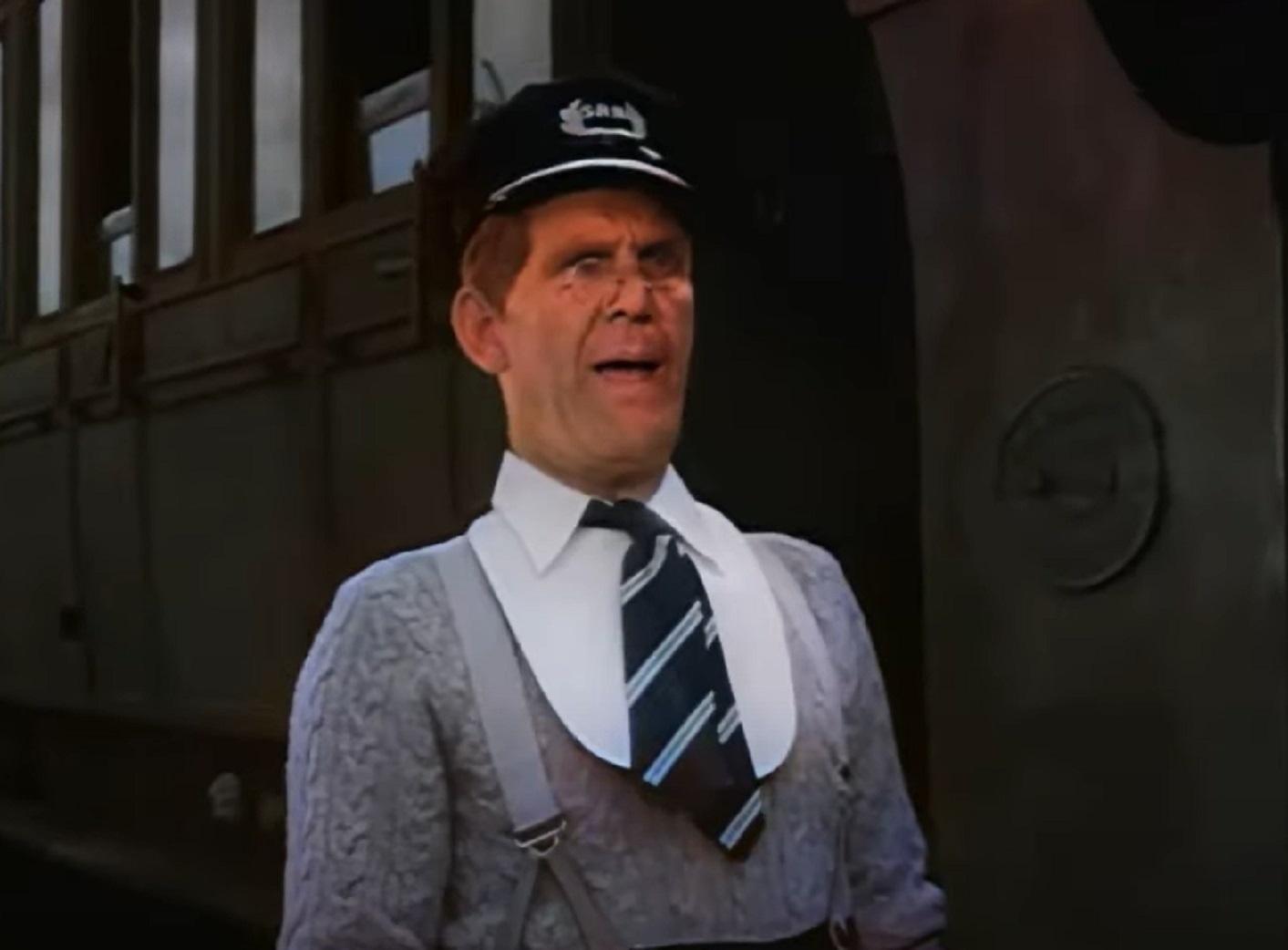 Gainsborough Pictures, Oh, Mr Porter! (1937)
Gainsborough Pictures, Oh, Mr Porter! (1937)
51. He Still Had Hope
Hay made one final public appearance on Good Friday in 1949. Little did he know, he only had three days left. Those in attendance attested that, despite his debilitating illness, he gave a show worthy of his illustrious career. They further added that Hay showed no outward signs of suffering and openly discussed his future plans and aspirations. However, it was not to be.
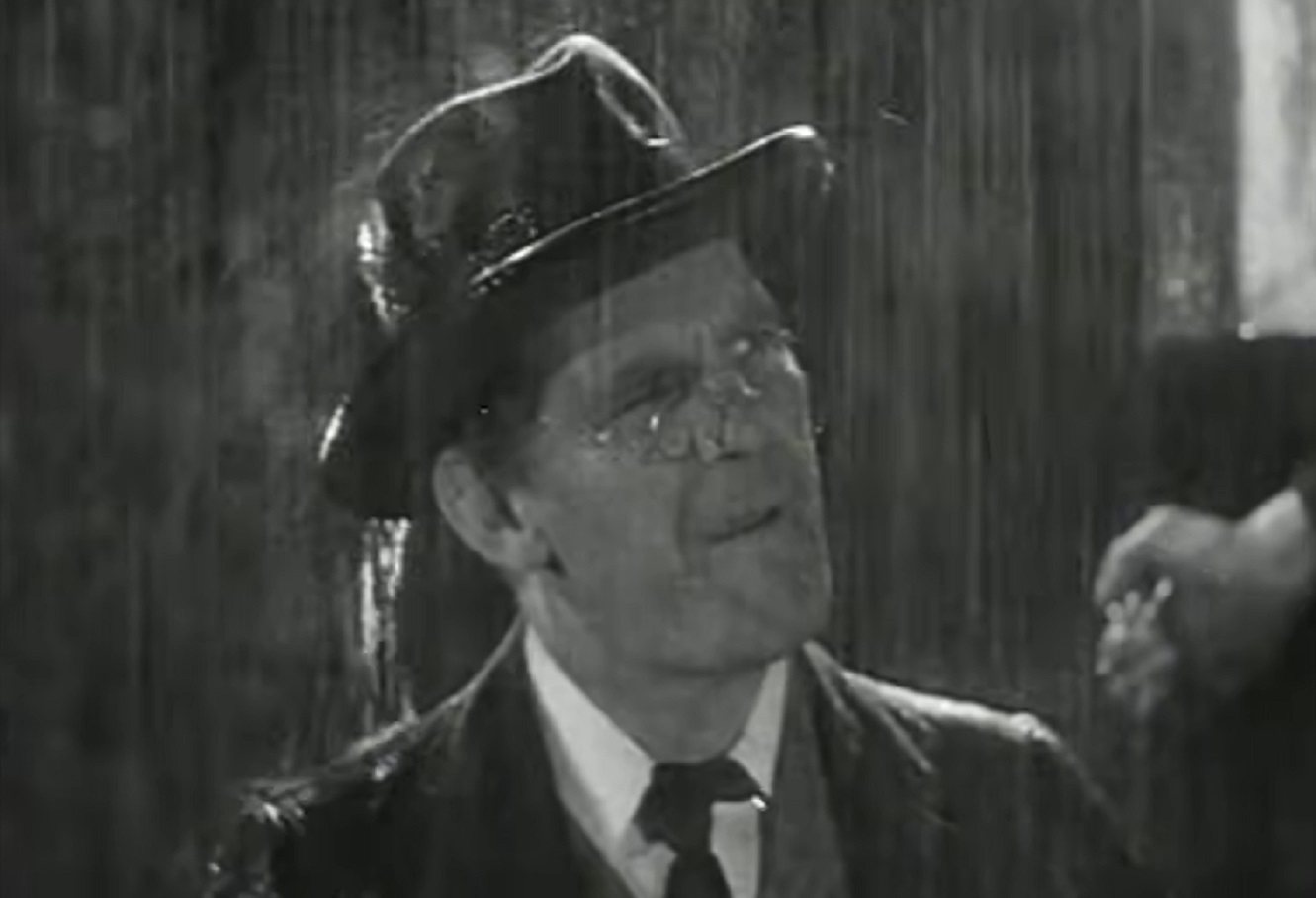 Gainsborough Pictures, Oh, Mr Porter! (1937)
Gainsborough Pictures, Oh, Mr Porter! (1937)
52. His Laughter Ended With A Sudden Stroke
Hay’s story came to a sudden and unexpected end. After struggling through his recovery, Hay suffered another stroke and took his final bow on April 18, 1949 at the golden age of 60. After bringing light and laughter to so many and explaining the mysteries of the stars, Hay’s light dimmed for the last time. Sadly, he didn’t even get a proper farewell.
 Gainsborough Pictures, Oh, Mr Porter! (1937)
Gainsborough Pictures, Oh, Mr Porter! (1937)
53. He Could Have Been A Knight
Though audiences celebrated Hay as one of comedy's finest talents, not all facets of his life attracted plaudits. Hay’s lifelong infidelities with Kopstadt while he was still, technically, married to his devout Catholic wife Gladys, cost him dearly. Rumor has it that the monarchy refused to bestow upon him a prestigious knighthood because of his scandalous love life.
But there was something ironic about his passing.
 Gainsborough Pictures, Ask a Policeman (1939)
Gainsborough Pictures, Ask a Policeman (1939)
54. He Had Simply Retired
Hay had made a career out of his schoolmaster character, parodying the emblematic British cultural figure. It was, therefore, fitting that Hay had met his end just as a schoolmaster would. Hay had been 60 at the time of his passing. This was, in a strangely ironic twist, the same age of mandatory retirement for schoolmasters.
 Gainsborough Pictures, Oh, Mr Porter! (1937)
Gainsborough Pictures, Oh, Mr Porter! (1937)
55. He Enjoyed Every Minute
In 2009, Graham Rinaldi published a biography on Hay. It had been a long overdue tribute to the legendary comedian and actor as Hay had never written an autobiography, detailing his trials and triumphs. He had, however, been in the process of writing a memoir entitled I Enjoyed Every Minute at the time of his passing.
So too had his audiences enjoyed every laugh.




